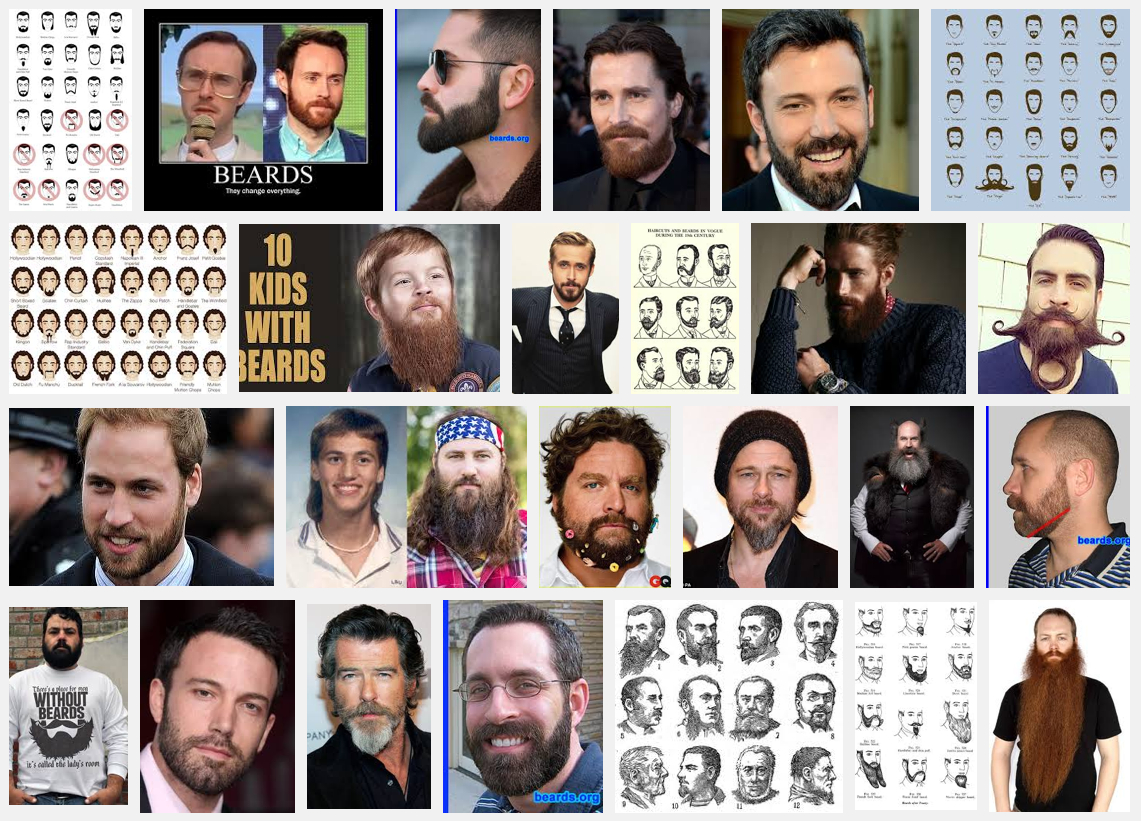Followers of all things hirsute, particularly male facial hair have recently declared “peak beard”. The declaration means that it’s no longer cool to be bearded (if you’re a man, anyway), since being bearded no longer represents a small, and hence very hip, minority. Does this mean our friends over a Duck Dynasty will have to don a clean-shaven look to maintain their ratings? Time will tell.
From the Guardian:
Hirsute men have been warned their attractiveness to potential partners may fade as facial hair becomes more prevalent, in a scenario researchers have called “peak beard”.
Research conducted by the University of NSW finds that, when people are confronted by a succession of bearded men, clean-shaven men become more attractive to them.
This process also works in reverse, with men with heavy stubble and full, Ned Kelly-style beards judged more attractive when present in a sea of hairless visages.
Researchers picked 1,453 bisexual or heterosexual women and 213 heterosexual men to take part in the study.
Participants were shown 36 images of men’s faces, with the first 24 pictures used to condition the subjects by showing them exclusively bearded or non-bearded men, or a mixture of the two.
The final 12 images then showed clean shaven or bearded men, with the participants ranking their attractiveness on a scale of minus four to four.
Researchers found the ranking of these men strongly depended upon the exposure of participants to bearded men prior to this. The more beards they’d already seen, the less attractive subsequent beards were, and vice versa with clean-shaven men.
This phenomenon is called “negative frequency-dependent sexual selection” and is present in several animal species, according to the UNSW team.
Researcher Robert Brooks told Guardian Australia the aim of the work was to look at the dynamics that drove the fashion of beards.
“There is a lot of faddishness with beards, they are on the way back and it’s interesting to look at that interaction with culture,” he said.
“It appears that beards gain an advantage when rare, but when they are in fashion and common, they are declared trendy and that attractiveness is over.”
Brooks conceded it was hard to tell how the experiment related to the real world, but said the fashion for beards might be reaching its zenith.
“The bigger the trend gets, the weaker the preference for beards and the tide will go out again,” he said. “We may well be at peak beard. Obviously, you will see more beards in Surry Hills than in Bondi, but I think we are near saturation point. This thing can’t get much bigger.
“These trends usually move in 30-year cycles from when they are first noticed but, with the internet, things are moving a lot faster.”
The researchers are now working on a larger, follow-up study that will look at the link between facial hair and masculinity.
“We still don’t really know the primary function of the beard,” Brooks said. “Some women are attracted to it, some are repelled. It is clear it is a sign of manliness, it makes men look older and also more aggressive. How much women like that depends, in a way, on how overtly masculine they like their men.
Read the entire article hair (pun intended).
Image: Men with beards. Courtesy of Google Search.
 Send to Kindle
Send to Kindle